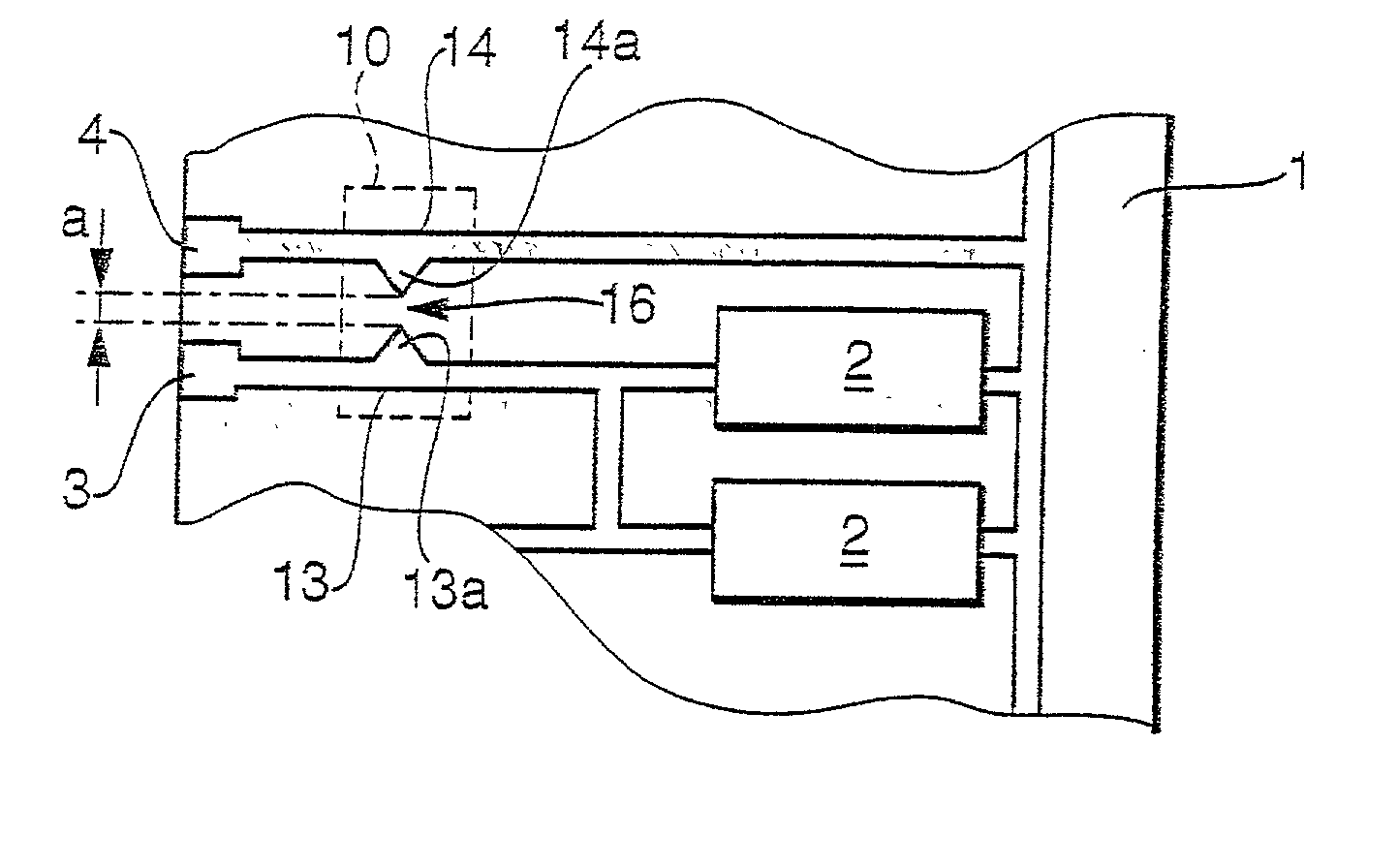Device for protecting an electric and/or electronic component arranged on a carrier substrate against electrostatic discharges
a technology for electric and/or electronic components, applied in the direction of coupling device connections, sustainable manufacturing/processing, final product manufacturing, etc., can solve the problems of increasing production costs, inability to prevent overvoltage, and complex mechanical and expensive design of the entire design
- Summary
- Abstract
- Description
- Claims
- Application Information
AI Technical Summary
Benefits of technology
Problems solved by technology
Method used
Image
Examples
Embodiment Construction
FIG. 1 shows a top view of the surface of a printed-circuit board 1, upon which a plurality of electrical and / or electronic components 2, e.g. microprocessors, storage components, semi-conductor chips, resistance components, inductive components or others are arranged. Printed-circuit board 1 is provided on one side with contact areas 3, 4 which are used for connecting the printed-circuit board to a male connector, contact area 3 being provided, for example, for the connection of a signal line, and contact area 4 being provided for the connection of a grounding contact to printed-circuit board 1. As FIG. 1 further shows, contact area 3 is connected via a printed circuit trace to the input of a component 2. Contact area 4 is connected via a further printed circuit trace 14 to the grounding contact of components 2. Grounding printed circuit trace 14 does not necessarily have to be connected to the grounding contact of components 2. Here, 415836 -8it can be any printed circuit trace wh...
PUM
 Login to View More
Login to View More Abstract
Description
Claims
Application Information
 Login to View More
Login to View More - R&D
- Intellectual Property
- Life Sciences
- Materials
- Tech Scout
- Unparalleled Data Quality
- Higher Quality Content
- 60% Fewer Hallucinations
Browse by: Latest US Patents, China's latest patents, Technical Efficacy Thesaurus, Application Domain, Technology Topic, Popular Technical Reports.
© 2025 PatSnap. All rights reserved.Legal|Privacy policy|Modern Slavery Act Transparency Statement|Sitemap|About US| Contact US: help@patsnap.com



